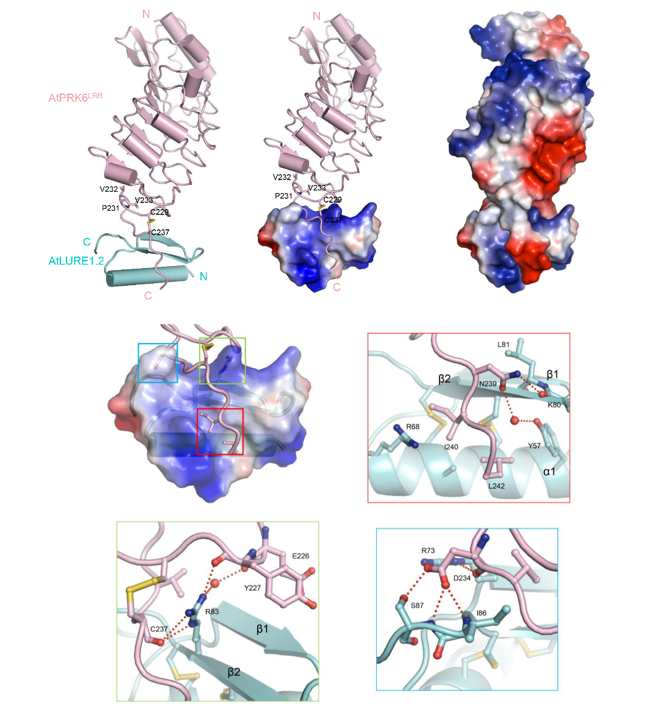|
The research group of Prof. Jijie Chai from School of Life Sciences at Tsinghua University published an article in Nature Communications on November 6th, 2017 entitled “Structural Basis for Receptor Recognition of Pollen Tube Attraction Peptides”. In the article, the researchers provided biochemical, structural and genetic evidence showing that PRK6 functions as a receptor of LURE peptides in A. thaliana, offering new insights into the understanding of mechanism underlying pollen tube attraction.
In flowering plants, fertilization is one of the most important processes in reproduction, and is precisely regulated by complicated cell-cell communication. Transportation of the immobile sperms directed by pollen tubes to the ovule-enclosed female gametophytes is important for sexual reproduction of flowering plants. The defensin-like (DEFL) cysteine-rich peptides (CRPs) LUREs secreted by female gametophytes play an essential role in pollen tube attraction to the ovule, although their receptors still remain controversial.
In order to determine the receptors of LURE peptides and understand their recognition mechanisms, Prof. Jijie Chai’s group screened a panel of receptor-like kinases (RLKs) and found that the RLK AtPRK6LRR but not the others tested interacted with the LURE peptide AtLURE1.2 in vitro. This finding was further confirmed by structural, biochemical and functional analyses, supporting AtPRK6 as a receptor of the LURE peptides. In addition, the crystal structure of the AtLURE1.2-AtPRK6LRR complex solved at 1.85Å revealed a novel ligand recognition mechanism of RLKs.
Prof. Jijie Chai, Dr. Zhifu Han from Tsinghua University and Prof. Tetsuya Higashiyama from Nagoya University are the corresponding authors. Xiaoxiao Zhang, Weijia Liu (PhD candidate, School of Life Sciences, Tsinghua University), and Takuya T. Nagae (PhD candidate, Nagoya University) are the co-first authors of this paper. Dr. Hidenori Takeuchi from Gregor Mendel Institute, Austria and Dr. Heqiao Zhang from School of Life Sciences, Tsinghua University also contributed to this work. The research was funded by the National Natural Science Foundation of China, the Ministry of Science and Technology, the Tsinghua-Peking Center for Life Sciences and the Beijing Advanced Innovation Center for Structural Biology. The project was supported by the Tsinghua University Branch of the China National Center for Protein Sciences (Beijing) and the Shanghai Synchrotron Radiation Facility.
Website link to this article£º
http://www.nature.com/articles/s41467-017-01323-8

Figure Overall structure of the AtPRK6LRR-AtLURE1.2 complex (upper) and Recognition mechanism of AtLURE1.2 by AtPRK6LRR (lower)
|
